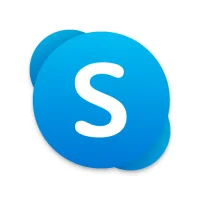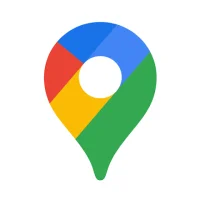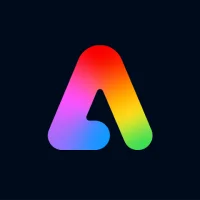How can I get started using the application?
9 min read Getting Started with the Application - written by Amine Rukhi, Content Creator March 06, 2024 21:52
Getting Started with the Application
1. Introduction
The "Getting Started with the Application" guide provides an accessible introduction to the Kivy framework. It also acts as a useful comparison guide for those already familiar with Kivy. For those new to Kivy, it is recommended that you begin with "How to use this guide", follow on to "Kivy at a glance", before going deeper with the rest of the user guide. Note that "Kivy at a glance" is specifically designed to get a working knowledge of Kivy that is useful in a matter of hours, while the rest of the user guide is a more gradual introduction that may take days or even weeks to get through. Be sure you understand something introduced at an early stage in the guide before continuing on to later parts of the guide. Since this guide is a work in progress, you are recommended to check out the Kivy and Python API References for anything not covered here. If you would like to help expand the user guide, it would be greatly appreciated, and you can find out more about how you can help at the "Getting involved" page.
2. System Requirements
Software Requirements In general, AutoCAD requires the Windows operating systems to be running. Specific system requirements are as follows: • AutoCAD 2005 – Windows XP or Windows 2000 • AutoCAD LT 2005 – Windows XP/2000 Additional requirements include necessary to run the CD installation and connect to web-based content within AutoCAD. • Intel Pentium III or later processor or AMD processor • 128 MB RAM (minimum) • 80 MB free disk space (minimum) • 1024 x 768 VGA with true color (minimum)
The following are the minimum system requirements for AutoCAD: • Pentium IV or Athlon processor, 1.4 GHz, 512 MB RAM, 750 MB hard disk space, and 1024 x 768 VGA display. The requirements for AutoCAD LT are a bit less demanding: • Pentium III processor, 800 MHz, 256 MB RAM, 350 MB of hard disk space, and 1024 x 768 VGA display. The primary difference between the two packages is the requirements for RAM and hard disk space. The most important component of any AutoCAD or AutoCAD LT system is the video card. In addition to the basic requirement for display, there are also certain requirements for hardware acceleration and OpenGL.
Hardware Requirements
3. Installation Process
The next step is to upgrade your CATIA license. Run the "config settings" in the Windows start menu and select environment variables. Check if the value of the variable 'DS_LICENSEFILE' is equal to the license code given by the vendor. If the value is correct and the software still cannot run, try to uninstall and install it again. If you still cannot find the problem, call the software vendor or visit the nearest service center.
To install the software is quite easy. Before installing, make sure you have met the minimum system requirements to run the software. With the CD installer, you can directly run the auto-play and choose the first option in the Windows dialog box. When you are using a USB installer, plug in your USB flash disk, then run the Windows Explorer and click the USB drive. Find setup.exe and run the software. In the next step, the software will detect the hardware lock (dongle) if the software has one. Without a hardware lock, the software will go to the next step. In the license manager dialog box, it will be shown whether the software is freeware, shareware, or a demo. The next step is the most important. Select the installation type that you want. We offer 2 installation types: Typical and Compact installation. For daily usage and complete features, select "Typical" installation. For simulation and component design only, select "Compact" installation, but the program will not work perfectly. Then define where the software will be stored on your computer. Follow the next and last step, click finish, and the software is ready to be used.
4. Initial Setup
Next, create an expenditure under your preferred category by right-clicking within the list window, followed by the selection of new expense. A similar window for category creation will emerge, regarding the input of a predefined item and price. If the item to be purchased is somewhat periodic (e.g. daily, weekly, monthly), an alternative to define a planned recurring expense is available at the bottom of the window. Fill in the recurrence period and the end date for the recurring expenditure, and the application will assist you by providing an advanced notification on the pending expense. This is useful for analyzing the potential loss on future expenses before the purchase is actually made.
By default, the application doesn't contain any entry at all. Thus, the new launch will present you with a blank list window. Your very first step should be defining at least one category for your personal income and expense organization, such as 'Work', 'Leisure', 'Utilities', etc. Income categorization may follow later, but assuring a balanced budget usually requires immediate attention on expenditure analysis submenu. A new window will be presented, prompting you to define the category type. For more information regarding income/expense category input, hover your mouse above it.
5. Navigating the Application
- Look for help features, which are often identical to those found in the Windows dialog box. Look up words you don't understand in the help index. If you still need help, look for a technical support telephone number or, only as a last resort, contact the software manufacturer via their website. - Teach yourself by experimenting. Start with unnamed objects containing the data types you are familiar with, and an active expression evaluating the type of data structure you want to try. Use the Paste button to get a textual version of the active expression widget and use the text interface to create a similar object with the desired data type. - Get a head start by using the find facility to locate all buttons, menus, and dialogs related to the widget you are trying to use. If you are working with a particular class in the reference manual, use the index button to find a class description, and incrementally follow menu items such as "Widget class → Core class → Class and Instance Names".
Use these strategies to find your way around the application:
User Comments (0)
Popular Apps










Editor's Choice









